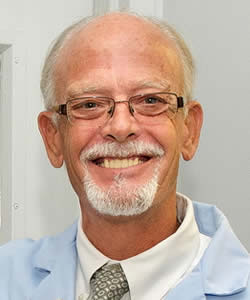
Antibiotics in Cell Culture – What types are available and when and how to utilize them
Introduction
Antibiotics are often chemicals and sometimes polypeptides that affect the ability of bacteria to grow. Antibiotics come in two categories, bacteriostatic and bactericidal. Bacteriostatic antibiotics don’t kill but inhibit some vital cellular process such as cell-wall synthesis or protein expression. If the baceriostatic antibiotic is removed bacterial growth can resume. Bactericidal antibiotics kill bacterial cells and therefore they are useful at preventing contaminations and eliminating them. There are many antibiotics available and it is important to know when and how to use them. This session is a good opportunity to ask your questions and get answers.
Question 1
If you want to include a low level of antibiotic in your hybridoma cell culture to reduce the risk of contamination, which type would you recommend and how much?
My first thought would be penicillin and streptomycin at 50 ug each/ml. The two can be purchased supplied together and is called pen-strep. Penicillin kills gram positive bacteria by inhibiting cell wall synthesis and streptomycin kills by inhibiting protein synthesis in gram positive and gram negative bacteria. If you are using a serum-free medium use 25 ug/ml of each.
Question 2
Which are all the antibiotics can be used in combination in large scale Vero cell culture and at what concentration ?
This question can be answered many ways depending on the goals. Maybe you would like to be proactive and you want to use antibiotics to prevent an infection or maybe you want to cure a current infection. Of course my recommendation is not to use antibiotics unless absolutely necessary. I prefer having good frozen stocks of cells that I can thaw if needed. Having said that though, I suspect the best general antimycotic is Fungizone (Amphptericin B). At normal working concentrations (0.5-2.5 ug/ml) it works to prevent fungal contaminations. Interestingly in Vero cells, at low concentrations (250 ng/ml) amphotericin B has been show to increase viral uptake (http:/www.ncbi.nih.gov/pmc/articles/PMC3194987/). I have provided a listing below of other antibiotics and antimycotics and their working concentrations. I will mention that the range of antibiotics and antimycotics used does vary depending of the media type used. Media containing serum can contain more antibiotic/antimycotic since the high protein, mostly albumin binds much of the reagent. If you are using a low protein medium or a serum-free medium you will need to use much less for equivalent results, perhaps 10% to 50% depending on specifics of your culture method.
NAME , CONCENTRATION, SPECTRUM, STABILITY AT 37C IN MEDIA
Anti-PPLO Agent , 10-100 ug/ul, Mycoplasma and gram positive bacteria, 3 days
Fungizone, 0.25-2.5 ug/ul, Fungi and yeast, 3 days
Gentamicin Sulfate, 5-50 ug/ml, Gram positive and gram negative bacteria and mycoplasma, 3 days
Kanamcin Sulfate, 100 ug/ml, Gram positive and gram negative bacteria and mycoplasma, 5 days
Neomycin Sulfate, 50 ug/ml, Gram positive and gram negative bacteria, 5 days
Nystatin, 100 U/ml, Fungi and yeast, 3 days
Penicillin G, 50-100 U/ml, Gram positive bacteria, 3 days
Polymixin B Sulfate, 100 U/ml, Gram negative bacteria, 5 days
Streptomycin Sulfate, 50-100 ug/ml, Gram positive and gram negative bacteria, 3 days
Question 3
Why would you want to use antibiotics at all? Can’t good cell culture techniques eliminate their use.
You are right in a perfect world and the best thing would be to not use antibiotics at all. Some might need antibiotics if their equipment or air-handling systems are not perfect. Some might use certain antibiotics for selection. Others might use antibiotics during primary culture. Sometimes it might be necessary, but if possible I try to do without it. If you are learning cell culture I strongly recommend not using antibiotics so that you can learn good technique quickly and not develop bad habits that may be masked by antibiotic use.
Question 4
We are having troubles with contamination in our primary cell cultures of neurons. I have been working with cell cultures for more than 7 years and I’ve never faced a contamination. The interesting part is that only our neurons culture get contaminated; our glial cells are always safe. For culturing neurons we use Neurobasal-A (Gibco 10888-022) supplemented with 1% antibiotics/antimycotic (Gibco 15240-062) and for culturing glia cells, we use DMEM. In our last experiment, we increased antibiotics/antimycotic concentration for 2%, but we still had contamination in some wells of the cell culture plate (with bacteria and fungi). What may be happening? Do you have some advice for us?
So I have some questions. For your neuron growth do you add serum to your Neurobasal A medium and do you use a feeder layer for growth or coat the wells?. I guess the question is what is different about your two cultures. I assume both cell types are isolated from the same tissue at the same time?